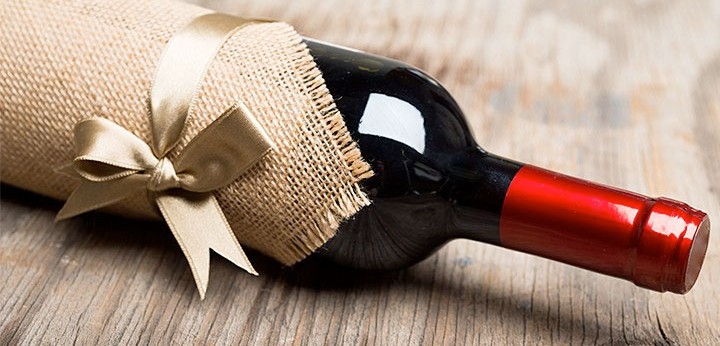
Selecting a good red wine can feel overwhelming, especially when faced with so many varieties, labels, and price ranges. Whether you’re looking to enjoy a glass with dinner, celebrate a special moment, or choose a thoughtful gift, understanding what makes a red wine “good” is the first step toward making the right choice. Let’s explore how you can confidently pick a bottle that fits your taste and occasion.
1. Know Your Taste Preferences
The journey to finding a great red wine begins with knowing what you like. Red wines range from light-bodied to full-bodied, with flavors that can be fruity, spicy, earthy, or bold.
-
Light-bodied wines (like Pinot Noir or Gamay) are smooth and subtle, ideal for beginners or those who enjoy softer flavors.
-
Medium-bodied wines (like Merlot or Grenache) strike a balance with moderate tannins and fruitiness.
-
Full-bodied wines (like Cabernet Sauvignon or Syrah) offer richness and intensity, perfect for pairing with hearty meals.
Experiment with different styles to discover which flavor profile suits your palate best. A wine that feels balanced — not too sweet, not too bitter — is often the most enjoyable.
2. Understand the Region and Grape Variety
Every bottle of red wine tells a story — of its region, climate, and grape variety. For example, Cabernet Sauvignon from Napa Valley will taste different from one produced in Bordeaux, even though they come from the same grape.
-
Cool climates (like France’s Burgundy or Oregon in the U.S.) typically produce lighter, more delicate wines.
-
Warm climates (like California or Australia) yield richer, fruit-forward wines.
When in doubt, explore reputable regions known for quality wines. Italy’s Chianti, France’s Bordeaux, and Spain’s Rioja are timeless choices, while newer regions like South Africa or Chile are known for exceptional value.
3. Check the Label and Vintage Year
A wine label can tell you a lot if you know what to look for. The vintage year (the year the grapes were harvested) indicates the wine’s age. Generally, red wines improve with a few years of aging, as tannins soften and flavors develop complexity. However, not all wines are made to age — some are best enjoyed young and fresh.
Also, pay attention to the alcohol content and region of origin, which can help you anticipate the flavor intensity. Wines with higher alcohol (above 14%) tend to be richer and bolder, while lower-alcohol wines (around 12%) are lighter and easier to drink.
4. Consider Food Pairing
A good red wine often shines brightest when paired with the right food. Each type of red wine complements specific dishes:
-
Cabernet Sauvignon pairs beautifully with red meat and rich sauces.
-
Pinot Noir is great with poultry, salmon, or creamy mushroom dishes.
-
Merlot complements Italian pastas, roasted vegetables, and cheese platters.
-
Malbec and Syrah add a touch of spice, making them ideal for barbecue and grilled dishes.
Remember, there are no strict rules — just combinations that enhance your dining experience.
5. Read Reviews and Recommendations
Wine tasting is subjective, but professional reviews and recommendations can help you narrow down choices. Look for feedback on flavor notes, smoothness, and balance. Reputable wine retailers and blogs often share expert opinions that guide you toward quality bottles within your budget.
If you’re searching for more insights and expert recommendations, you can explore this detailed guide on good red wine for gift ideas and tasting notes from seasoned wine enthusiasts.
6. Set Your Budget Wisely
Price doesn’t always determine quality. While premium wines can offer remarkable depth, many affordable bottles provide excellent value. For everyday enjoyment, wines between $15 and $30 often deliver great flavor and balance. If you’re buying for a special event or as a gift, consider slightly higher-end wines from recognized vineyards for an extra touch of elegance.
A helpful tip: try wines from lesser-known regions — they often offer premium taste without the premium price tag.
7. Don’t Be Afraid to Experiment
Part of the joy of wine appreciation lies in exploration. Attend wine tastings, join a wine club, or simply pick a new bottle each month. Over time, you’ll refine your preferences and recognize the notes, aromas, and textures you love most.
Keeping a small wine journal can also help — jot down what you liked or didn’t like about each bottle. Before long, you’ll be selecting wines with confidence and sophistication.
Final Thoughts
Choosing a good red wine isn’t about finding the most expensive bottle on the shelf — it’s about understanding your taste, occasion, and the story behind each wine. With a little knowledge and curiosity, anyone can develop a discerning palate and an appreciation for this timeless drink.
So, the next time you uncork a bottle, take a moment to savor its aroma, texture, and balance. After all, good wine isn’t just a drink — it’s an experience meant to be shared and enjoyed.



